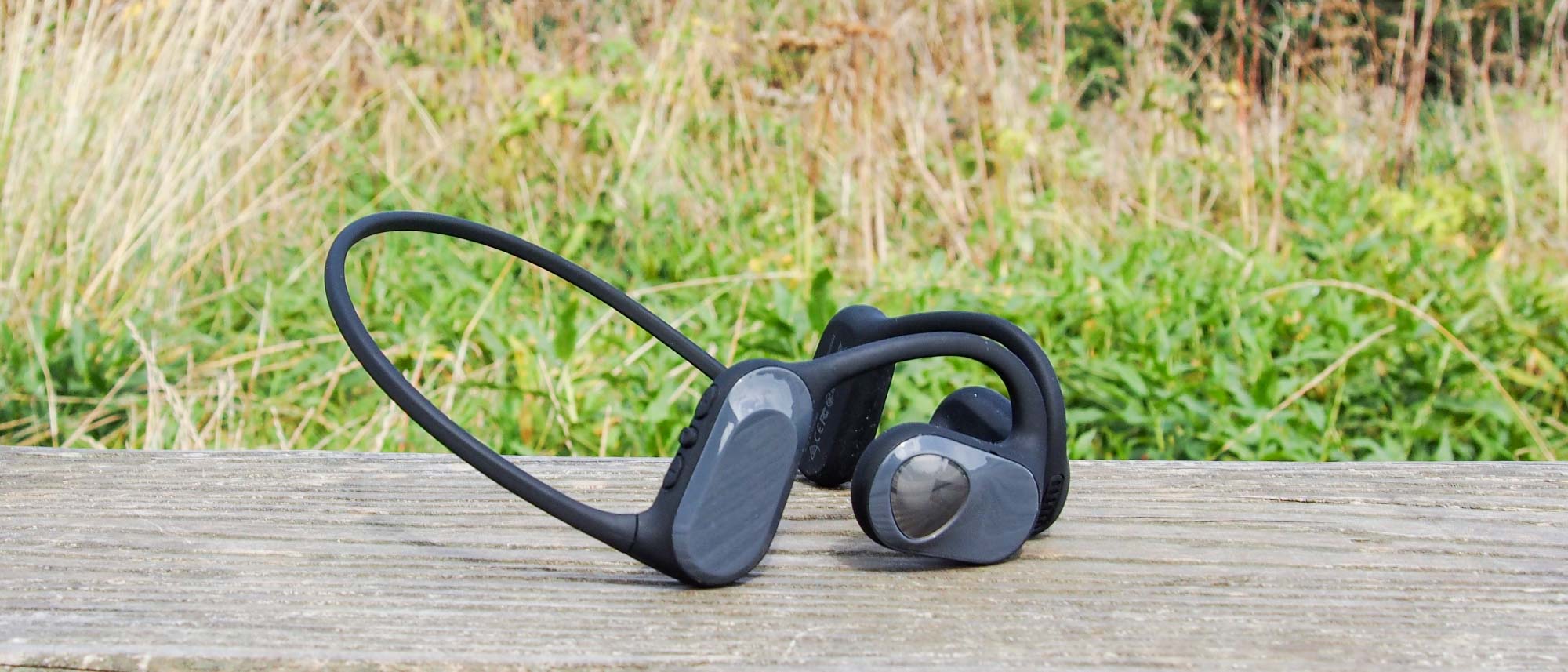Tom's Guide Verdict
Great value air conduction-style headphones that offer enjoyable sound and a comfortable design.
Pros
- +
Comfortable, lightweight design
- +
Bright, customisable sound
- +
Companion app has useful EQ modes
Cons
- -
Styling may not appeal to all
- -
High sound leakage
- -
Physical controls are fiddly
Why you can trust Tom's Guide
Price: $49 / £49
Type: Open-ear / air conduction
Colors: Black
Battery life (rated): 14 hours
Connectivity: Bluetooth 5.3
Durability: IPX4
Weight: 1.1 ounces
The Soundpeats RunFree are part of a new wave of wireless, open-ear sports headphones that uses what’s been dubbed ‘air conduction’ as a counter to bone conduction to deliver audio while not entirely blocking out the world around you.
They join more high profile air conduction headphones like the Shokz OpenFit to deliver a bigger, more customizable sound compared to the best bone-conduction headphones.
Soundpeats is also promising to do that from a lighter and more comfortable design that its own RunFree Lite model and comes in cheaper than a lot of other air conduction-style options, making them an option for anyone looking for workout-friendly, open-ear sports headphones.
Soundpeats RunFree review: Price and availability
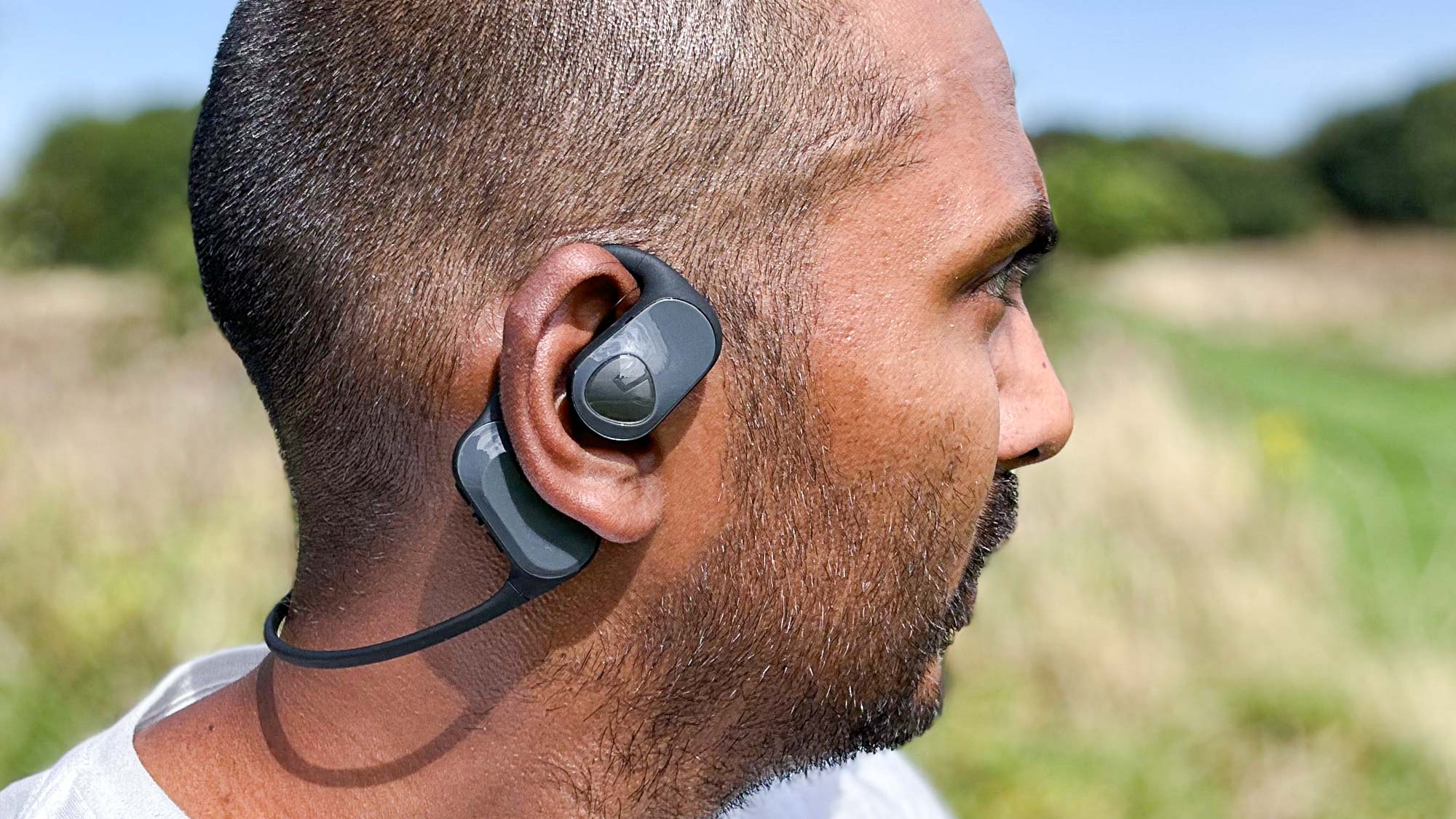
The Soundpeats RunFree are available now priced at $59 / £59. They're currently available directly from the Soundpeats website, and can currently be found discounted to $49 at Amazon. They're available in black only.
That makes them a significantly cheaper option to many alternative open-ear, air conduction headphones, including the four-star rated Shokz OpenFit priced at $179 / £179.
Soundpeats RunFree review: Design and comfort
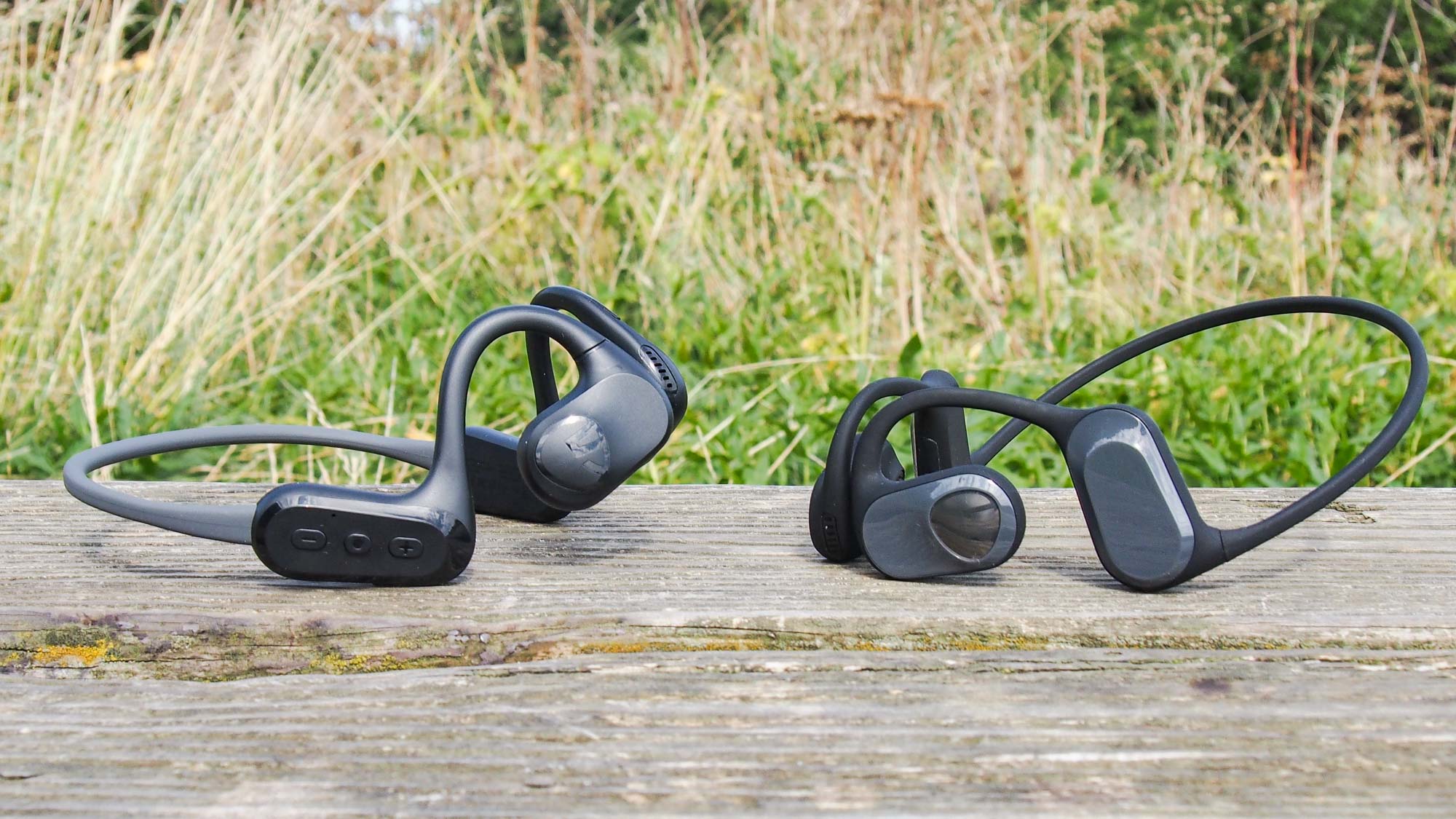
While the RunFree open-ears don’t opt for bone conduction technology, they certainly settle on a look that’s become pretty synonymous with the best bone-conduction headphones. They have a neckband-style design that weighs in at just 1.1ounces (31g), so just slightly heavier than a pair of Shokz OpenRun at 0.9 ounces (26g). It’s good to see that Soundpeats has swapped the predominantly plastic build used on the RunFree Lite (pictured above (left) alongside the RunFree) a silicone-based one that feels nicer to touch and makes it feel a little less cheap.
They’re certainly not the prettiest looking headphones, but if you can live without them being so aesthetically pleasing they're a light, comfortable and secure fitting set of headphones during and outside of exercising.
On the right side of the headphones there are three physical buttons. They are quite tightly packed close to one another, which resulted in me hitting the middle power button when I actually wanted to turn the volume up or skip a track. Below that is the USB-C port, which means you’re not reliant on a proprietary charging cable to power it up.
There’s also room for dual microphones to let you take calls and an IPX4 durability rating means that it's protected against sweat and light rain. I’ve used them in both scenarios and seen no connection dropouts or issues with performance overall.
Soundpeats RunFree review: Performance
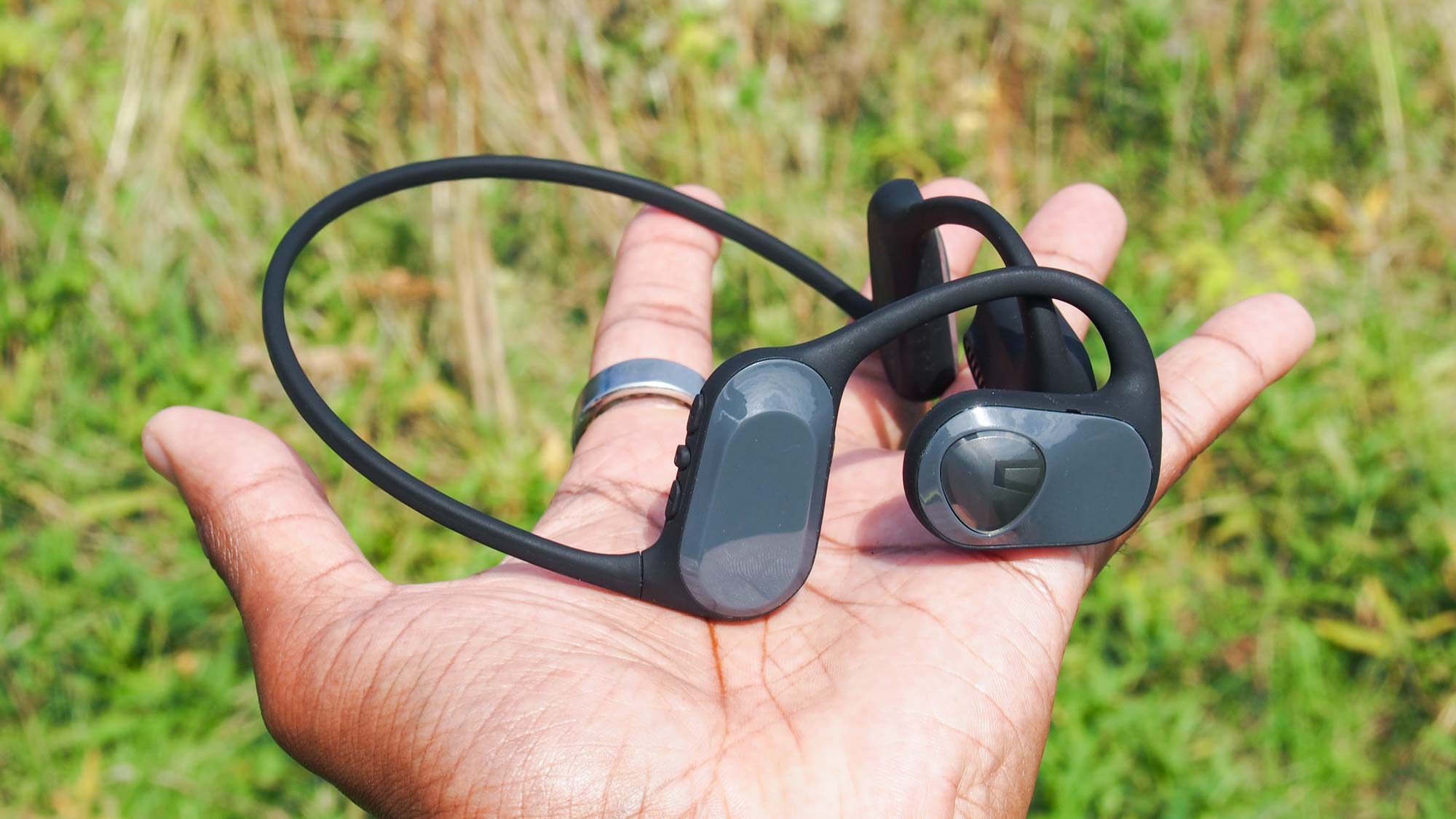
Soundpeats says it uses an air conduction approach to delivering the open ear sound on the RunFree, so it’s not blocking up your ears while using a 16.2mm-sized driver to deliver audio to your ears without blocking them up.
Like bone conduction, air conduction wants to offer you a balance between what you hear in your headphones and around you while offering a fuller, more rewarding sound. And I definitely feel that the RunFree manages to achieve that.
Before getting into sound, connectivity on the whole has been solid across the phones, laptops and watches I’ve paired them up to. You do also have support to pair multiple devices at the same time as well too.
I use a Spotify playlist to hear how these headphones handle a range of different music genres. I also used them for podcasts both spoken and music-based as well. The overriding feeling of the RunFree is that they offer a bright, enjoyable sound with some finesse and a good soundstage here.
While not spotless in all areas, they handle streaming audio and calls very well, even with competing noise like being near busy roads, battling wind or the PA system in a gym.
The good news is that you have preset EQ and custom EQ modes here via the Soundpeats companion app, which is pretty basic in nature and additionally offers volume controls, the ability to view battery status and a game mode to promise lag-free audio for gaming sessions. Having that better control over sound does mean you can get something that should work well for what you’re listening to.
They can go pretty loud. But like bone conduction headphones they leak sound, and it's arguably more noticeable if you’re using them in quiet environments. In louder ones, it’s not so much of an issue and the balance of ambient sound and whatever you're listening to works well on the whole.
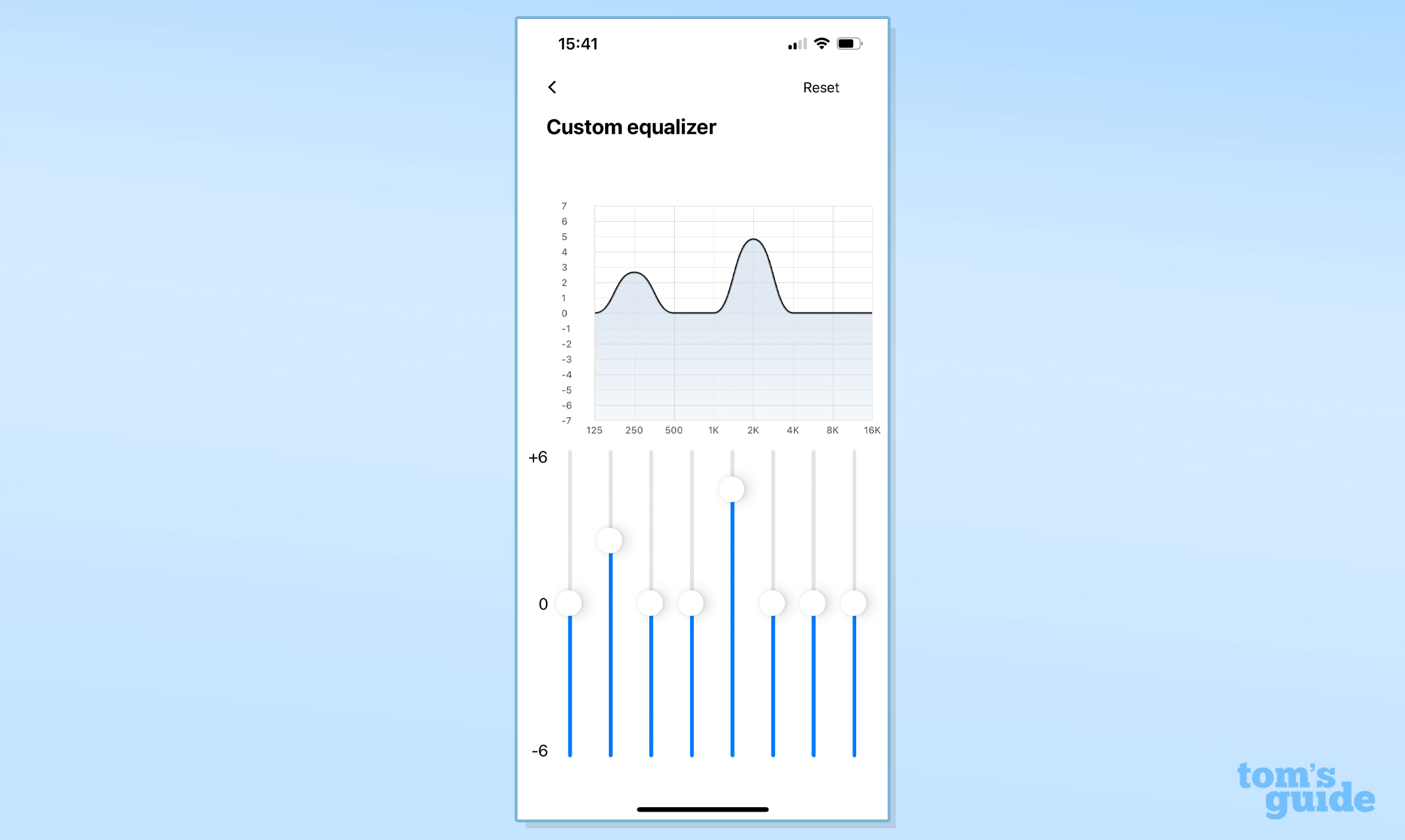
Using the Soundpeats classic EQ mode delivers a sound profile that's pretty balanced but doesn’t really excel on any fronts. On tracks like Massive Attack’s "Unfinished Sympathy" or Bronski Beat’s "Smalltown Boy", that bass warmth isn’t massively present and there’s a touch of muddiness there too. Switch to a more suitable profile and there's a more noticeable punch of bass, mids feel smoother and while it doesn’t sparkle in the treble department, it’s by no means lacking there either. Switching to podcasts and audiobooks and there’s good clarity to enjoy too.
Matching the presets to the genres doesn’t necessarily work all the time. David Bowie’s "Heroes" had quite a harsh sound, so you do need to play around with the profile that works best for your tunes. You can’t skip between these EQ modes directly from the headphones, but in general I found the bass boost EQ mode and custom EQ route produced the best results.
If you’re using them to make calls, you definitely need to factor the environment you plan to handle those calls. Voices can sound echoey, and as such they're unlikely to rank among the best headphones with a mic for calls. If you’re planning to rely on them for a lot of work calls and meetings, then this isn’t an area where they excel.
Soundpeats RunFree review: Battery life
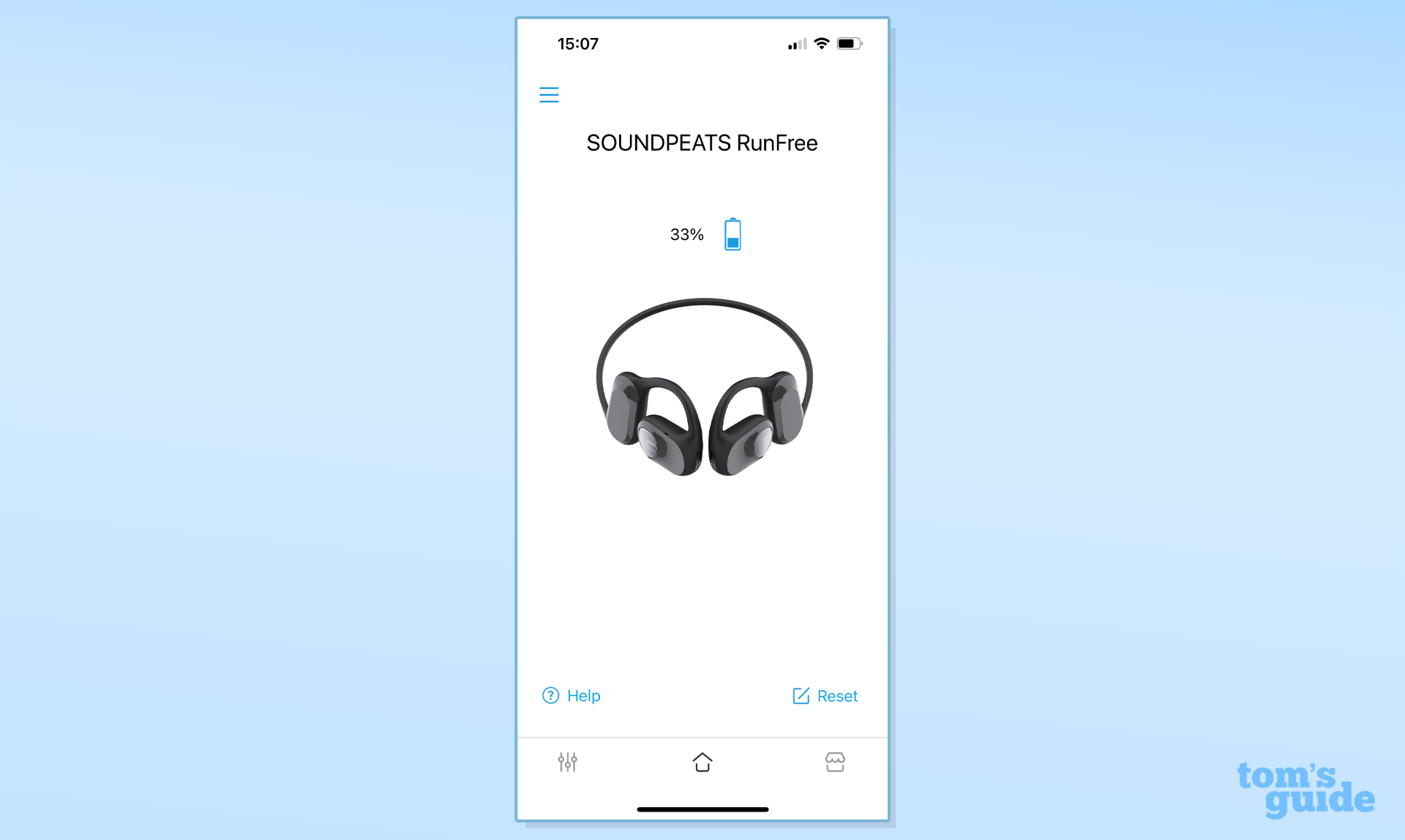
The RunFree hosts a 140mAh capacity battery with a quoted battery life of 14 hours, but that’s based on using them at 60% volume. I think you also need to factor in the EQ modes you opt for as bass-heavy modes seem to demand more of the battery too.
For an hour of playback the battery dropped by 7%, so that claimed battery number does seem to be just about on the money based on my testing.
It’s nice to see a more universal charging method here too with Soundpeats using USB-C charging, though based on our experience, you’re not going to need to charge them on a regular basis even if using them every day for an hour or two.
Soundpeats RunFree review: Verdict
The Soundpeats RunFree are a versatile pair of open-ear headphones with a bright sound for a very reasonable asking price. They're light and robust enough for active lifestyles, help you to stay aware of your surroundings, and although they're not great on calls and some mode may eat up battery life at a faster rate than others, it's difficult to level too many criticisms at them at the price.
More from Tom's Guide
Michael is a freelance journalist who has covered consumer technology for over a decade and specializes in wearable and fitness tech. Previously editor of Wareable, he also co-ran the features and reviews sections of T3, and has a long list of bylines in the world of consumer tech sites.
With a focus on fitness trackers, headphones, running wearables, phones, and tablet, he has written for numerous publications including Wired UK, GQ, Men's Fitness, BBC Science Focus, Metro and Stuff, and has appeared on the BBC Travel Show. Michael is a keen swimmer, a runner with a number of marathons under his belt, and is also the co-founder of YouTube channel The Run Testers.
